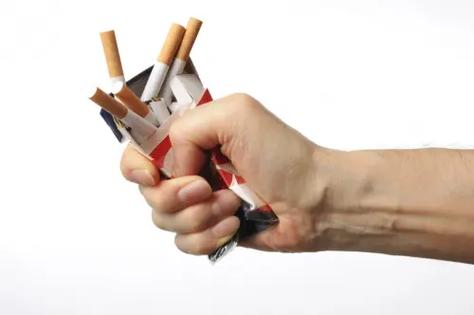For any parent whose child has undergone congenital cataract surgery, the journey is often filled with a mix of hope, vigilance, and a multitude of care instructions. The primary goal is always to preserve and optimize the visual outcome, giving that young eye the best possible chance to develop normal sight. We diligently follow the patching schedules, administer the prescribed eye drops, and attend every follow-up appointment. However, there is a significant, yet frequently overlooked, environmental factor that can profoundly undermine all these efforts: exposure to tobacco smoke.
The link between smoking and a host of health problems is well-documented, from lung cancer to heart disease. But its insidious role in eye health, particularly in the delicate and developing visual system of an infant who has had cataract surgery, is a critical piece of the puzzle that deserves our full attention. The period after this surgery is a narrow and critical window for visual development. The brain is learning to see, and anything that compromises the clarity of the visual pathway or the health of the ocular structures can tip the scales towards a lifetime of visual impairment. The risk of developing amblyopia, often called "lazy eye," is already the central challenge in these cases. Amblyopia occurs when the brain favors one eye over the other, leading to the underuse and subsequent impaired visual development of the weaker eye. When we introduce a toxin like tobacco smoke into this fragile equation, we are significantly increasing that risk.
To understand why tobacco is so detrimental, we need to look at its chemical composition and how it interacts with a healing and developing eye. Tobacco smoke is not a single substance but a complex cocktail of over 7,000 chemicals, hundreds of which are toxic, and at least 70 are known to cause cancer. When we talk about its effects on a child's eyes after surgery, two primary mechanisms come into play: vascular constriction and oxidative stress.
Nicotine, the addictive component in tobacco, is a potent vasoconstrictor. It causes the tiny, delicate blood vessels throughout the body, including those in the eye, to narrow. This reduces blood flow, which is the lifeline for delivering oxygen and essential nutrients to tissues. For an eye that has just undergone the trauma of surgery and is in a critical phase of healing and development, optimal blood flow is non-negotiable. The retina, the light-sensitive layer at the back of the eye, and the optic nerve have a high metabolic demand. Reduced blood flow can starve these crucial tissues, impairing their function and slowing the overall healing process. Furthermore, the development of clear, healthy visual pathways in the brain depends on a rich supply of oxygenated blood.
Simultaneously, the smoke itself is a powerful pro-oxidant. It generates an overwhelming number of unstable molecules called free radicals. These molecules damage cells through a process known as oxidative stress, attacking proteins, lipids, and even DNA. The eye has natural antioxidant defenses, but in an infant, and especially one recovering from surgery, these defenses can be easily overwhelmed by the constant assault from secondhand smoke. This oxidative damage can contribute to chronic inflammation, further disrupting the delicate environment needed for the eye and brain to establish a strong visual connection.
The most direct way a child is exposed to these dangers is through secondhand smoke. This is the smoke that is exhaled by a smoker or that comes from the burning end of a cigarette, cigar, or pipe. Infants and young children are particularly vulnerable because they have faster breathing rates and their bodies are still developing. When a parent or caregiver smokes in the home or car, even in another room, the toxic particles linger in the air, settling on furniture, clothes, and carpets. Every time the child breathes, they are inhaling this toxic cloud, and these chemicals enter their bloodstream, making their way to the delicate blood vessels of the eyes.
Perhaps even more alarming is the risk of thirdhand smoke. This refers to the residual tobacco contaminants that stick to surfaces and dust long after the cigarette has been extinguished. A child crawling on a smoky carpet, chewing on a toy that was in a room where someone smoked, or being held by a person whose clothes and hair carry the smell of smoke, is being exposed to these persistent toxins. For an infant who has had congenital cataract surgery, this constant, low-level exposure can create a background of chronic irritation and systemic stress that continuously interferes with the visual development process.

So, how does this toxic exposure translate into a heightened risk for amblyopia? The pathway is multifold. Firstly, the compromised blood flow and oxidative stress can lead to a less than optimal outcome from the surgery itself. It can increase the risk of post-operative complications such as inflammation or delayed healing, which can cloud the visual axis. Any opacity that blocks a clear, sharp image from reaching the retina is a direct trigger for amblyopia. If the eye's internal environment is constantly agitated by toxins, it may not settle into the clear, stable state required for the brain to process images correctly.
Secondly, and more subtly, tobacco smoke can affect the neural processing of vision. The development of the visual cortex—the part of the brain responsible for interpreting sight—is an experience-dependent process. It requires a steady stream of clear, focused images from both eyes. The systemic stress, inflammation, and potential hypoxia (low oxygen) caused by smoke exposure can impair the function of the neurons in the visual pathway. This means that even if the physical eye heals reasonably well, the signal being sent to the brain might be degraded or noisy. The brain, in its effort to create the clearest possible picture, may then start to suppress the input from the weaker, smoke-affected eye, cementing the development of amblyopia.
The combination of a physical obstacle to clear vision (from surgical complications) and a neurological discouragement from using the eye creates a perfect storm that can overwhelm even the most rigorous patching regimen. Patching the stronger eye only works if the amblyopic eye is capable of sending a good signal when forced to work. If its potential is capped by the physiological damage from tobacco smoke, the therapy's effectiveness is fundamentally limited.
Given these profound risks, creating a smoke-free environment is not just a general health recommendation; it is an integral and non-negotiable part of the post-operative care plan for a child who has had congenital cataract surgery. This commitment must be absolute and involve the entire family's cooperation.
The most effective strategy is complete cessation of smoking by all household members. This eliminates the risk at its source—no secondhand smoke, and significantly reduces thirdhand smoke contamination. We understand that quitting smoking is a tremendous challenge, laden with addiction and habit. It is crucial to approach this not with judgment, but with support and a clear understanding of the high stakes for the child's vision. Many healthcare providers can direct parents to resources such as quitlines, support groups, and nicotine replacement therapies.
For parents or family members who are not ready or able to quit, it is imperative to establish a strict policy of smoking only outdoors, far away from the child. This means never smoking inside the house or car, even with windows open. The car, being a small, enclosed space, is especially hazardous. After smoking outside, it is important to wash hands and change into fresh clothing before holding or interacting with the child. This helps minimize the transfer of thirdhand smoke residues.
Maintaining a clean indoor environment is also key. Regular, thorough vacuuming with a HEPA filter vacuum cleaner can help remove smoke particles from carpets and furniture. Washing soft furnishings, stuffed toys, and bedding frequently is also beneficial. Using air purifiers with HEPA and carbon filters in the main living areas and the child's bedroom can help capture airborne particles and reduce overall pollutant levels.
It is also wise to be mindful of environments outside the immediate home. When visiting friends or relatives, or using childcare services, inquire about their smoking policies. Ensuring that all caregivers, including grandparents and babysitters, are fully aware of the critical need for a smoke-free environment is essential for consistency in the child's care.
The journey to secure good vision for a child after congenital cataract surgery is a marathon, not a sprint. It requires a holistic approach that encompasses not just the medical procedures and therapies, but the entire ecosystem in which the child grows and develops. The evidence is clear: exposure to tobacco smoke introduces a powerful, negative variable that can directly counteract the benefits of surgery and rehabilitation. By understanding the mechanisms—from vasoconstriction to oxidative stress—and taking decisive, comprehensive action to create a completely smoke-free life for the child, parents and caregivers are doing more than just protecting general health. They are actively safeguarding the precious and fragile process of visual development, dramatically increasing the odds that their child will emerge from this challenge with the gift of clear, binocular sight, free from the shadow of amblyopia. This proactive step is one of the most powerful acts of care a family can provide.














